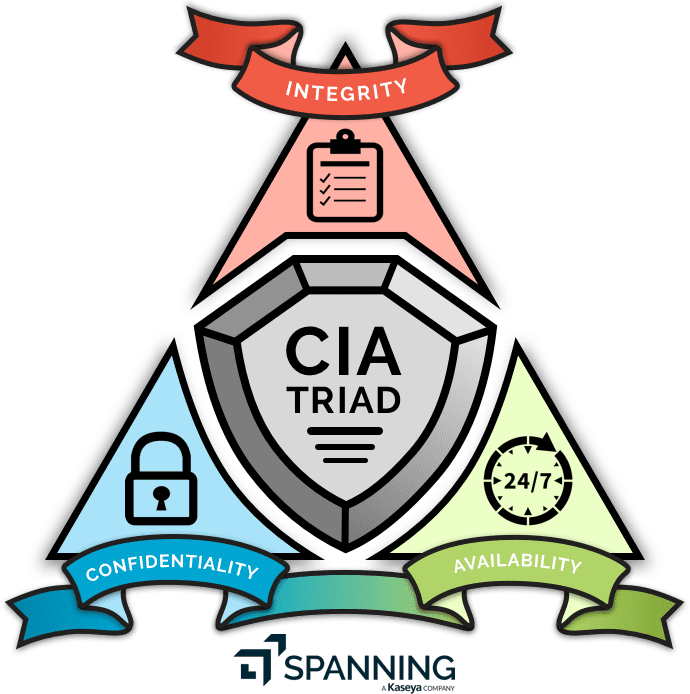Cloud and Data SecurityCIA Triad: Best Practices for Securing Your Org
The CIA Triad, or Confidentiality-Integrity-Availability, is a flexible model that can be applied to help secure your organization’s information systems, applications, and network. Learn about the three pillars of the framework and how you can implement them into your org’s information security protocol.
By
Shyam Oza
3 minute read
Navigating the labyrinth of cybersecurity can be confusing without a framework. On the other hand, force-fitting a prescriptive security framework to your organization’s unique business, technology, and regulatory requirements, can prove to be complex as well. If security controls are too restrictive, information becomes less readily available and business productivity suffers as a result. When security controls are looser than they should be, however, the potential for data loss and corruption is increased, which can also hinder productivity. The CIA Triad isn’t a top-secret, government-approved model, as the name may suggest, but a rather elegantly flexible model that can be applied to secure your organization’s information systems, applications, and network. Learn more about it below.
What is the CIA Triad?
The three governing principles of the CIA Triad are confidentiality, integrity, and availability.
Confidentiality
Confidentiality or privacy refers to measures taken to guarantee that data — particularly sensitive data — is protected from unauthorized access. In the age of GDPR, privacy is required to be a basic design consideration. The level confidentiality can vary based on the data type and/or regulation. For example, as per regulations like the GDPR, protecting customer data would mean going beyond mere authorized access, to piecemeal access only if the application absolutely requires it.
Integrity
Integrity pertains to safeguarding the accuracy of data as it moves through your workflows. It not only includes protecting data from unauthorized deletion or modification, but also should contain measures to quickly reverse the damage if a breach were to occur.
Availability
Availability, quite simply, means providing seamless, uninterrupted access to your users. This entails robust server and network infrastructure and high-availability mechanisms built into system design. ## CIA Triad: Implementation Best Practices
## CIA Triad: Implementation Best Practices
Here are some best practices to implementing the CIA Triad of confidentiality, integrity, and availability.
Putting Confidentiality into Practice
- Categorize data and assets being handled based on their privacy requirements.
- Require data encryption and two-factor authentication to be basic security hygiene.
- Ensure that access control lists, file permissions and white lists are monitored and updated regularly.
- Train employees about privacy considerations both at a generic org-wide level, and as per the nature of their role.
Scoping Integrity
- Review all data processing, transfer and storage mechanisms.
- Version control, data logs, granular access control, and checksums can be useful to enforce integrity. Hash functions can further prevent data corruption.
- Understand your organization’s compliance and regulatory requirements. For instance, GDPR permits data transfers to vendors in non-EU countries or other organizations, only if “adequate levels of protection” and “legal safeguards” are in place.
- Invest in a dependable backup and recovery solution; one that assures business continuity and quick data recovery in the event of a security or data breach.
Ensuring Availability
- Build preventive measures such as redundancy, failover, and Redundant Array of Independent Disks (RAID) into system design. Make security audits routine. Auto-update or stay abreast of system, network, and application updates.
- Utilize detection tools such as network/server monitoring software and anti-virus solutions.
- Know that even highly-secure SaaS platforms and applications can experience downtime. Reliable cloud-based data backup ensures that all data can be accurately recovered in minutes.
- Develop a Data Recovery and Business Continuity plan with detailed corrective measures in the event of data loss, including timely communication with customers.
As you secure your organization’s data and systems with the Confidentiality-Integrity-Availability model, keep in mind that even the best practices and tools benefit from a safety net…which is exactly what a solid backup and recovery solution is.
Learn More About SaaS Backup